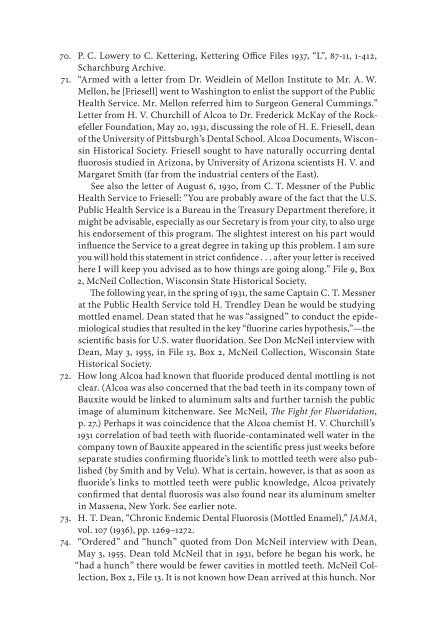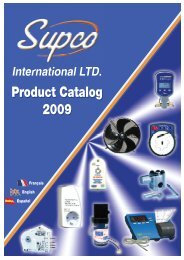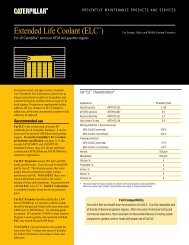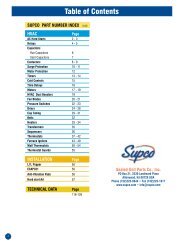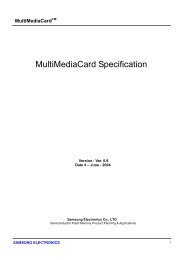Epigraphs Note on Terminology Acknowledgments Introduction
Epigraphs Note on Terminology Acknowledgments Introduction
Epigraphs Note on Terminology Acknowledgments Introduction
You also want an ePaper? Increase the reach of your titles
YUMPU automatically turns print PDFs into web optimized ePapers that Google loves.
70. P. C. Lowery to C. Kettering, Kettering Office Files 1937, “L”, 87-11, 1-412,<br />
Scharchburg Archive.<br />
71. “Armed with a letter from Dr. Weidlein of Mell<strong>on</strong> Institute to Mr. A. W.<br />
Mell<strong>on</strong>, he [Friesell] went to Washingt<strong>on</strong> to enlist the support of the Public<br />
Health Service. Mr. Mell<strong>on</strong> referred him to Surge<strong>on</strong> General Cummings.”<br />
Letter from H. V. Churchill of Alcoa to Dr. Frederick McKay of the Rockefeller<br />
Foundati<strong>on</strong>, May 20, 1931, discussing the role of H. E. Friesell, dean<br />
of the University of Pittsburgh’s Dental School. Alcoa Documents, Wisc<strong>on</strong>sin<br />
Historical Society. Friesell sought to have naturally occurring dental<br />
fluorosis studied in Ariz<strong>on</strong>a, by University of Ariz<strong>on</strong>a scientists H. V. and<br />
Margaret Smith (far from the industrial centers of the East).<br />
See also the letter of August 6, 1930, from C. T. Messner of the Public<br />
Health Service to Friesell: “You are probably aware of the fact that the U.S.<br />
Public Health Service is a Bureau in the Treasury Department therefore, it<br />
might be advisable, especially as our Secretary is from your city, to also urge<br />
his endorsement of this program. The slightest interest <strong>on</strong> his part would<br />
influence the Service to a great degree in taking up this problem. I am sure<br />
you will hold this statement in strict c<strong>on</strong>fidence . . . after your letter is received<br />
here I will keep you advised as to how things are going al<strong>on</strong>g.” File 9, Box<br />
2, McNeil Collecti<strong>on</strong>, Wisc<strong>on</strong>sin State Historical Society.<br />
The following year, in the spring of 1931, the same Captain C. T. Messner<br />
at the Public Health Service told H. Trendley Dean he would be studying<br />
mottled enamel. Dean stated that he was “assigned” to c<strong>on</strong>duct the epidemiological<br />
studies that resulted in the key “fluorine caries hypothesis,”—the<br />
scientific basis for U.S. water fluoridati<strong>on</strong>. See D<strong>on</strong> McNeil interview with<br />
Dean, May 3, 1955, in File 13, Box 2, McNeil Collecti<strong>on</strong>, Wisc<strong>on</strong>sin State<br />
Historical Society.<br />
72. How l<strong>on</strong>g Alcoa had known that fluoride produced dental mottling is not<br />
clear. (Alcoa was also c<strong>on</strong>cerned that the bad teeth in its company town of<br />
Bauxite would be linked to aluminum salts and further tarnish the public<br />
image of aluminum kitchenware. See McNeil, The Fight for Fluoridati<strong>on</strong>,<br />
p. 27.) Perhaps it was coincidence that the Alcoa chemist H. V. Churchill’s<br />
1931 correlati<strong>on</strong> of bad teeth with fluoride-c<strong>on</strong>taminated well water in the<br />
company town of Bauxite appeared in the scientific press just weeks before<br />
separate studies c<strong>on</strong>firming fluoride’s link to mottled teeth were also published<br />
(by Smith and by Velu). What is certain, however, is that as so<strong>on</strong> as<br />
fluoride’s links to mottled teeth were public knowledge, Alcoa privately<br />
c<strong>on</strong>firmed that dental fluorosis was also found near its aluminum smelter<br />
in Massena, New York. See earlier note.<br />
73. H. T. Dean, “Chr<strong>on</strong>ic Endemic Dental Fluorosis (Mottled Enamel),” JAMA,<br />
vol. 107 (1936), pp. 1269–1272.<br />
74. “Ordered” and “hunch” quoted from D<strong>on</strong> McNeil interview with Dean,<br />
May 3, 1955. Dean told McNeil that in 1931, before he began his work, he<br />
“had a hunch” there would be fewer cavities in mottled teeth. McNeil Collecti<strong>on</strong>,<br />
Box 2, File 13. It is not known how Dean arrived at this hunch. Nor


